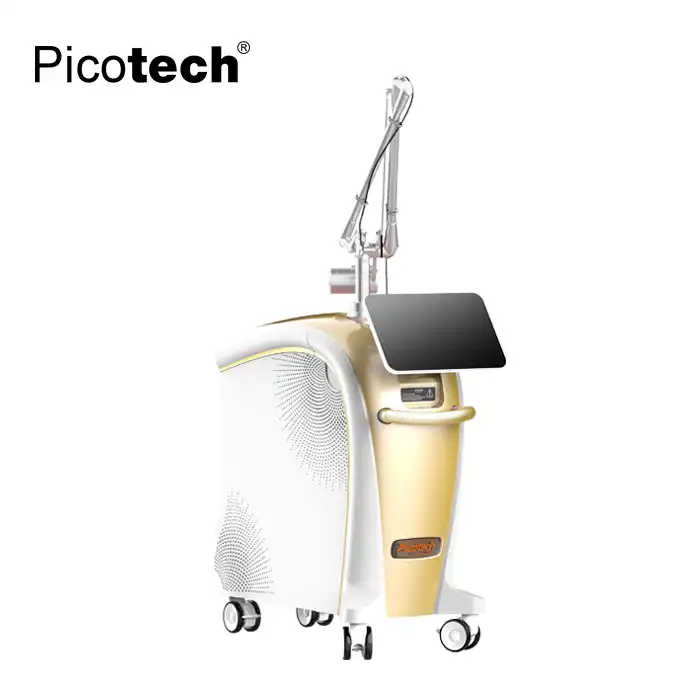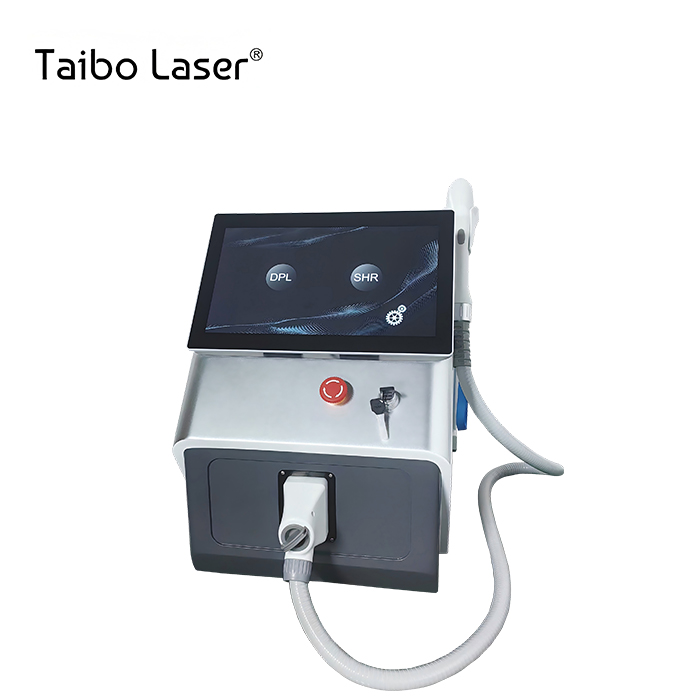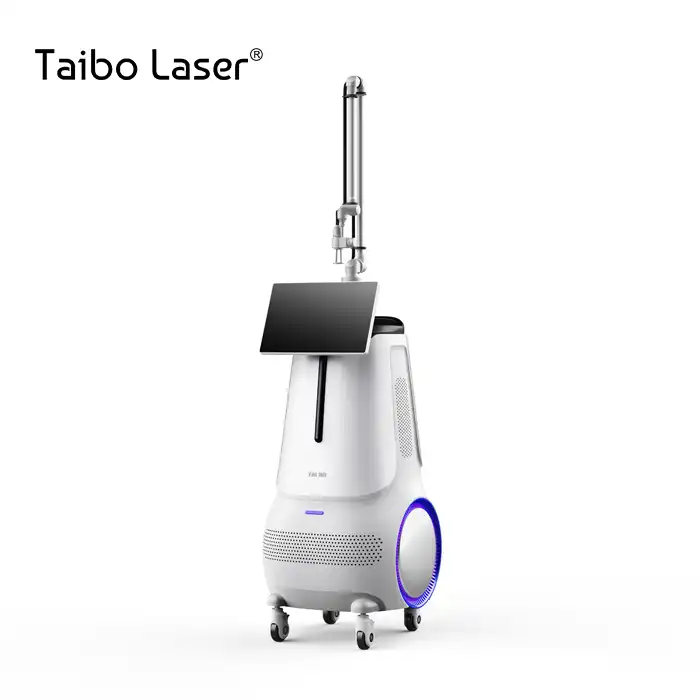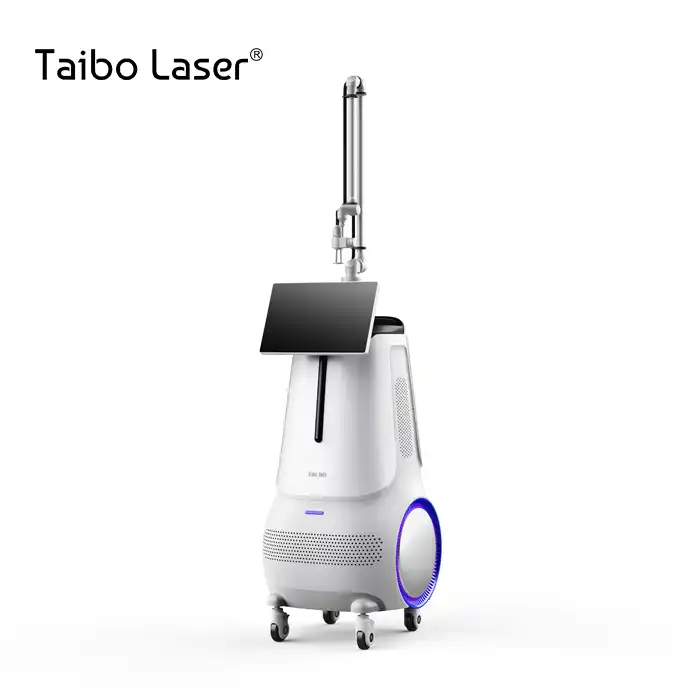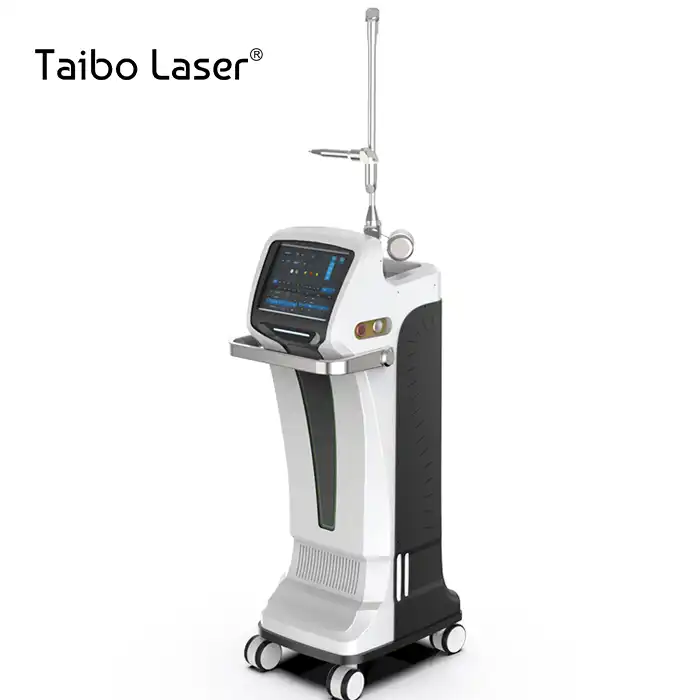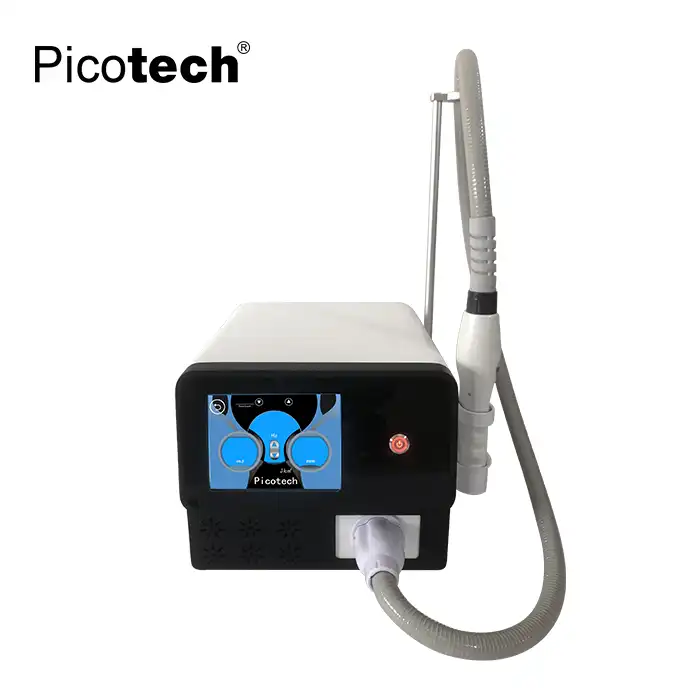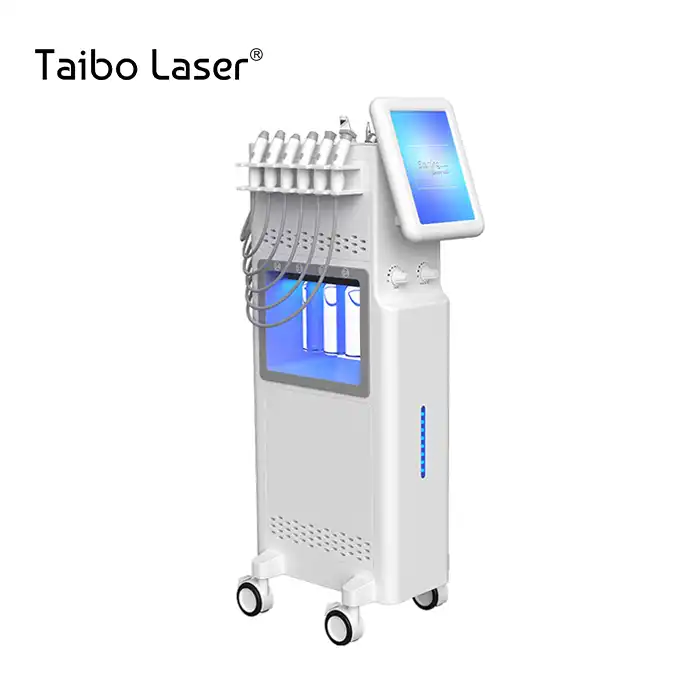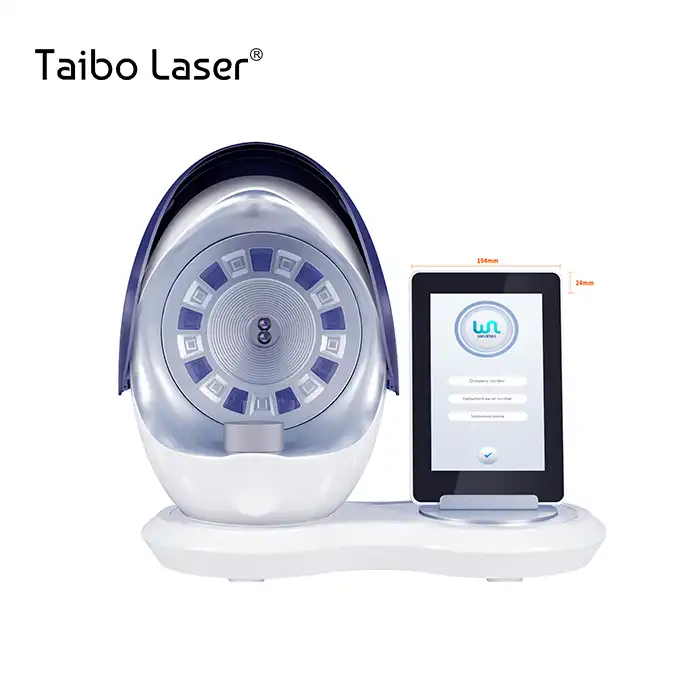
What is Q-Switch laser 1064 nm?
2025-09-25 09:14:47
Are you struggling with stubborn skin pigmentation, unwanted tattoos, or age spots that refuse to fade despite trying countless topical treatments? Do you find yourself hiding behind makeup or feeling self-conscious about your skin imperfections? The q switch 1064 laser technology represents a revolutionary breakthrough in aesthetic medicine, offering precise, effective treatment for these challenging skin concerns. This advanced laser system utilizes near-infrared light at a wavelength of 1064 nanometers to target deep-seated pigmentation and melanin deposits with remarkable precision. Unlike traditional treatments that only address surface-level issues, the Q switch 1064 laser penetrates deeper into the dermis, delivering ultra-short pulses measured in nanoseconds to shatter pigment particles without causing thermal damage to surrounding tissues. This technology has transformed the approach to pigmentation removal, tattoo elimination, and skin rejuvenation, providing patients with safer, more effective treatment options that deliver visible results with minimal downtime.
Understanding Q Switch 1064 Laser Technology and Its Mechanisms
The Q switch 1064 laser operates on the principle of selective photothermolysis, a revolutionary concept that allows for precise targeting of specific chromophores within the skin while preserving surrounding healthy tissue. This sophisticated technology utilizes a neodymium-doped yttrium aluminum garnet (Nd:YAG) crystal as its active medium, generating coherent light at the 1064 nanometer wavelength. The "Q-switched" designation refers to the quality switching mechanism that enables the laser to produce extremely short, high-energy pulses lasting only nanoseconds. This rapid energy delivery is crucial for effective treatment, as it creates photoacoustic effects rather than thermal damage, ensuring that pigmented lesions are mechanically disrupted rather than heated. The fundamental working mechanism involves the absorption of laser energy by melanin and other chromophores within the skin. When the Q switch 1064 laser energy encounters pigmented particles, it causes rapid thermal expansion and subsequent fragmentation of these particles into smaller components. These microscopic fragments are then naturally eliminated by the body's lymphatic system over the following weeks and months. The 1064 nm wavelength is particularly effective for treating deeper pigmentation because it can penetrate through the epidermis without being significantly absorbed by melanin in the superficial layers, allowing it to reach dermal pigmentation that other wavelengths cannot effectively address. The precision of q switch 1064 laser technology extends beyond simple pigment targeting. Modern systems incorporate sophisticated beam delivery mechanisms, including adjustable spot sizes ranging from 2-10mm, allowing practitioners to customize treatments based on lesion size and location. The energy output can be precisely controlled, typically ranging from 100-2000 mJ, enabling treatment of various pigmentation densities and depths. Advanced cooling systems, combining air and water cooling technologies, maintain optimal operating temperatures and enhance patient comfort during procedures.
-
Advanced Pulse Duration Technology in Q Switch Systems
The pulse duration characteristics of Q switch 1064 laser systems represent one of the most critical factors determining treatment efficacy and safety. With pulse widths measuring approximately 6 nanoseconds, these systems deliver energy faster than the thermal relaxation time of melanin-containing structures. This rapid energy delivery creates photomechanical effects that shatter pigmented particles without allowing heat to diffuse to surrounding tissues. The ultra-short pulse duration is what distinguishes Q-switched lasers from other laser technologies and makes them uniquely effective for pigmentation treatment. The relationship between pulse duration and treatment outcomes cannot be overstated when discussing q switch 1064 laser applications. Shorter pulses create more selective targeting, reducing the risk of thermal injury to surrounding tissues while maximizing the photomechanical disruption of target chromophores. This precision is particularly important when treating sensitive areas or when working with patients who have darker skin types, where the risk of post-inflammatory hyperpigmentation must be minimized. The 6-nanosecond pulse duration of professional Q-switched systems ensures optimal balance between efficacy and safety. Working frequency parameters of Q switch 1064 laser systems typically range from 1-10 Hz, allowing practitioners to adjust treatment speed based on the specific application and patient comfort requirements. Lower frequencies may be preferred for initial treatments or sensitive areas, while higher frequencies can be utilized for larger treatment areas or when multiple passes are required. This flexibility in frequency adjustment, combined with precise energy control, enables customized treatment protocols that optimize outcomes while minimizing adverse effects.
Clinical Applications and Treatment Capabilities of Q Switch 1064 Laser
The versatility of Q switch 1064 laser technology has established it as an indispensable tool in modern aesthetic and dermatological practices. The primary applications encompass a broad spectrum of pigmentation disorders, from superficial epidermal lesions to deep dermal pigmentation that has historically been challenging to treat effectively. The 1064 nm wavelength's ability to penetrate deeply while maintaining selectivity for melanin makes it particularly valuable for treating conditions such as nevus of Ota, café-au-lait macules, solar lentigines, and post-inflammatory hyperpigmentation. Tattoo removal represents one of the most demanding applications for q switch 1064 laser systems, requiring the ability to fragment various ink particles while preserving surrounding skin integrity. The 1064 nm wavelength is particularly effective for black and dark blue tattoo inks, which are among the most common and historically challenging colors to remove. Professional tattoo removal with Q-switched technology involves multiple treatment sessions, with the laser energy systematically breaking down ink particles into smaller fragments that can be eliminated by the body's natural processes. The treatment interval typically requires 6-8 weeks between sessions to allow for complete healing and ink particle clearance. Melasma treatment with Q switch 1064 laser technology has gained significant attention in recent years, particularly with the development of specialized treatment protocols. The Q-PTP (Q-switched low fluence laser therapy) technique utilizes lower energy densities delivered at higher frequencies to gradually lighten melasma without triggering rebound hyperpigmentation. This approach requires a thorough understanding of melasma pathophysiology and careful treatment planning to achieve optimal outcomes while minimizing the risk of treatment-induced complications.
-
Dermal and Epidermal Pigmentation Treatment Protocols
The differentiation between dermal and epidermal pigmentation is crucial for developing effective treatment protocols with Q switch 1064 laser systems. Epidermal pigmentation, including freckles, solar lentigines, and superficial age spots, typically responds well to lower energy settings and fewer treatment sessions. The relatively shallow location of these lesions allows for effective treatment without requiring maximum penetration capabilities. Treatment protocols for epidermal pigmentation often involve single or few treatment sessions with immediate visible improvements and minimal downtime. Dermal pigmentation presents more complex treatment challenges, requiring the full penetration capabilities of the q switch 1064 laser to reach target chromophores located in the deeper layers of the skin. Conditions such as nevus of Ota, blue nevi, and drug-induced hyperpigmentation require higher energy densities and multiple treatment sessions to achieve satisfactory clearance. The treatment approach must account for the depth of pigmentation, density of melanin deposits, and individual patient factors such as skin type and healing response. Professional assessment and customized treatment planning are essential for optimal outcomes in dermal pigmentation cases. The treatment interval considerations for both dermal and epidermal pigmentation involve allowing adequate time for the body's natural clearance mechanisms to eliminate fragmented pigment particles. Typically, 4-8 weeks between treatments provides sufficient time for healing and pigment clearance while maintaining treatment momentum. This interval may be adjusted based on individual healing responses and the specific characteristics of the pigmented lesion being treated.
Safety Protocols and Operational Parameters for Q Switch 1064 Laser Systems
Safety considerations in Q switch 1064 laser operations extend beyond basic laser safety protocols to encompass specific requirements related to high-energy, short-pulse laser systems. The nominal ocular hazard distance (NOHD) for 1064 nm Q-switched lasers can extend up to 1 kilometer, necessitating appropriate eye protection for all personnel in the treatment area. Specialized laser safety goggles designed for 1064 nm wavelength protection are mandatory for operators and any other individuals present during treatment procedures. The selection of appropriate protective eyewear must consider both the wavelength and the optical density requirements specific to the laser's output parameters. Environmental safety protocols for q switch 1064 laser systems include proper ventilation to manage any plume or vapor generated during treatment procedures. While the photomechanical action of Q-switched lasers produces minimal thermal effects compared to continuous wave or long-pulsed systems, appropriate ventilation remains important for maintaining optimal air quality in the treatment environment. Additionally, the high peak power output of these systems requires careful attention to electrical safety and proper grounding of all equipment components. Patient safety protocols encompass comprehensive pre-treatment assessment, including skin type evaluation, medication review, and realistic expectation setting. The Fitzpatrick skin type classification system guides energy selection and treatment protocols, with darker skin types requiring more conservative approaches to minimize the risk of post-inflammatory hyperpigmentation. Pre-treatment photography and detailed treatment planning documentation ensure consistent approach and enable objective assessment of treatment outcomes.
-
Equipment Maintenance and Quality Assurance Procedures
Professional Q switch 1064 laser systems require regular maintenance and calibration to ensure consistent performance and optimal safety. The complex optical components, including the Q-switching mechanism and beam delivery system, must be regularly inspected and maintained according to manufacturer specifications. The cooling systems, both air and water-based, require periodic maintenance to ensure optimal thermal management and prevent equipment overheating that could compromise performance or safety. Energy calibration and beam profile verification represent critical aspects of q switch 1064 laser maintenance protocols. Regular testing of energy output across the full range of settings ensures that treatment parameters remain consistent and predictable. Beam profile analysis helps identify potential issues with optical components that could affect treatment uniformity or efficacy. Many professional systems incorporate built-in self-diagnostic capabilities with over 30 inspection points that continuously monitor system performance and alert operators to potential issues. Documentation and record-keeping requirements for Q-switched laser operations include detailed treatment logs, maintenance records, and adverse event reporting. Professional practices must maintain comprehensive records of all treatments, including patient information, treatment parameters, outcomes, and any complications. This documentation serves multiple purposes, including quality assurance, regulatory compliance, and clinical outcome assessment for continuous improvement of treatment protocols.
Advanced Features and Technological Innovations in Modern Q Switch 1064 Laser Systems
Contemporary Q switch 1064 laser systems incorporate numerous advanced features designed to enhance treatment efficacy, operator convenience, and patient comfort. Multi-wavelength capabilities allowing simultaneous or sequential use of 1064 nm, 755 nm, and 532 nm wavelengths provide practitioners with comprehensive treatment options for various pigmentation types and colors. The 1064 nm wavelength serves as the primary workhorse for deep pigmentation and dark tattoo removal, while additional wavelengths expand treatment capabilities for different chromophores and tattoo colors. Intelligent beam delivery systems with adaptive optics ensure consistent energy distribution across the treatment area, eliminating hot spots that could cause unwanted thermal damage. The honeycomb delivery pattern available in some systems creates uniform energy distribution with high density coverage, optimizing treatment efficiency while maintaining safety margins. Adjustable spot sizes from 2-10 mm accommodate different lesion sizes and enable precise treatment of both small, discrete lesions and larger areas of pigmentation. Modern q switch 1064 laser systems feature sophisticated user interfaces with large color touchscreens that provide intuitive control over all treatment parameters. Pre-programmed treatment protocols for common indications streamline the treatment process while ensuring consistent parameter selection. Real-time energy monitoring and feedback systems provide operators with immediate confirmation of energy delivery, enabling precise treatment control and documentation.
-
Integration of Picosecond Technology and Ultra-Short Pulse Innovations
The evolution toward picosecond pulse durations represents a significant advancement in Q switch 1064 laser technology, offering even greater precision in pigment fragmentation while further reducing thermal effects. Picosecond systems deliver pulses lasting trillionths of a second, creating more efficient photomechanical disruption of target chromophores. This ultra-short pulse duration enables treatment of previously challenging pigmentation types and reduces the number of treatment sessions required for many applications. The integration of picosecond technology with traditional nanosecond capabilities in hybrid systems provides practitioners with maximum flexibility in treatment approaches. The ability to select between picosecond and nanosecond pulse durations based on specific clinical requirements optimizes treatment outcomes while accommodating different patient needs and lesion characteristics. This technological advancement has particularly benefited tattoo removal applications, where the enhanced fragmentation capabilities of picosecond pulses can significantly reduce treatment times and improve clearance rates. Advanced targeting capabilities in modern systems include fractionated beam delivery options that create controlled patterns of treatment zones within the targeted area. This approach enables treatment of larger areas while allowing untreated intervals that support rapid healing and reduce overall treatment trauma. The combination of fractionated delivery with q switch 1064 laser technology has opened new applications in skin rejuvenation and scar treatment, expanding the clinical utility of these systems beyond traditional pigmentation applications.
Treatment Outcomes and Patient Expectations Management
Realistic expectation setting forms the foundation of successful Q switch 1064 laser treatment outcomes, requiring clear communication about the timeline, number of sessions, and anticipated results for specific conditions. Epidermal pigmentation typically shows rapid improvement, with many lesions demonstrating significant lightening or complete clearance after one to three treatment sessions. The immediate whitening effect observed immediately after treatment, known as immediate tissue response, provides patients with visual confirmation of treatment delivery, though the final outcome becomes apparent over the following weeks as the body processes fragmented pigment particles. Dermal pigmentation presents more complex outcome expectations, often requiring multiple treatment sessions spaced 6-12 weeks apart to achieve optimal clearance. Conditions such as nevus of Ota may require 8-15 treatment sessions for complete clearance, while café-au-lait macules typically respond with fewer treatments. The variability in treatment response depends on factors including pigment density, depth, individual healing response, and adherence to post-treatment care protocols. Professional assessment and individualized treatment planning are essential for establishing appropriate expectations and treatment timelines. Tattoo removal outcomes with q switch 1064 laser systems depend on numerous factors including ink composition, tattoo age, location, patient skin type, and individual immune response. Professional tattoos typically require 8-15 treatment sessions for significant clearance, while amateur tattoos may respond more rapidly due to different ink characteristics and application techniques. The 1064 nm wavelength is particularly effective for black and dark blue inks, which comprise the majority of tattoo pigments. Treatment intervals of 6-8 weeks allow for optimal healing and pigment clearance between sessions.
-
Post-Treatment Care and Healing Optimization
Post-treatment care protocols for Q switch 1064 laser procedures focus on promoting optimal healing while minimizing the risk of complications such as hyperpigmentation, infection, or scarring. Immediate post-treatment care includes the application of cooling measures to reduce inflammation and discomfort. Cool compresses applied for 10-15 minutes several times daily during the first 24-48 hours help manage acute inflammatory response and enhance patient comfort. Topical antibiotic ointments may be recommended to prevent secondary infection, particularly in areas prone to bacterial colonization. Sun protection represents a critical component of post-treatment care, as UV exposure can trigger inflammatory responses and potentially cause hyperpigmentation in treated areas. Patients must be counseled on the importance of consistent broad-spectrum sunscreen use with SPF 30 or higher, along with physical sun protection measures such as protective clothing and sun avoidance during peak hours. This protection should be maintained throughout the entire treatment course and for several months following completion of the treatment series. The healing timeline following q switch 1064 laser treatment typically involves an initial inflammatory phase lasting 2-7 days, during which treated areas may appear red, swollen, or develop superficial crusting. This is followed by a resolution phase where pigment particles are gradually eliminated by the body's lymphatic system over 4-12 weeks. Patients should be educated about normal healing expectations and provided with clear guidelines for when to seek professional consultation if healing appears abnormal or complications develop.
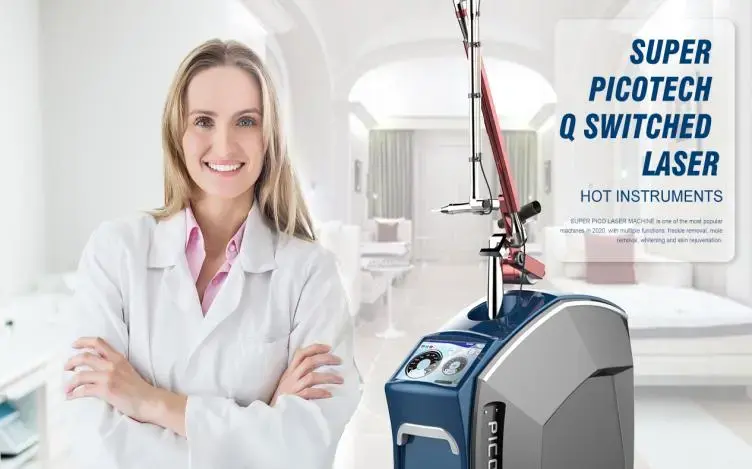
Conclusion
Q switch 1064 laser technology represents a transformative advancement in aesthetic medicine, offering unparalleled precision for treating deep pigmentation, tattoo removal, and skin rejuvenation. This sophisticated technology harnesses ultra-short nanosecond pulses at the 1064 nm wavelength to achieve selective photothermolysis, fragmenting unwanted pigments while preserving surrounding healthy tissue.
Cooperate with Xi'an Taibo Laser Beauty Company
As a leading China q switch 1064 laser manufacturer with over 15 years of production and export experience, Xi'an Taibo Laser Beauty Company stands at the forefront of laser beauty technology innovation. Our comprehensive product line includes advanced Q-switched Nd:YAG laser systems that incorporate cutting-edge features such as multiple wavelengths (532nm, 755nm, 1064nm), adjustable energy output (100-2000mJ), and superior cooling systems for optimal performance and patient comfort.
Our commitment to excellence extends beyond manufacturing to encompass comprehensive support services including two-year warranties, professional training programs, 24-hour technical support, and customizable OEM/ODM solutions. With CE, ISO13485 certifications and ongoing FDA applications, we ensure that our High Quality q switch 1064 laser systems meet the highest international standards for safety and efficacy.
Whether you're seeking a reliable China q switch 1064 laser supplier, exploring q switch 1064 laser wholesale opportunities, or looking for competitive q switch 1064 laser price options, Taibo Laser delivers exceptional value through superior technology, comprehensive support, and competitive pricing. Our q switch 1064 laser for sale encompasses professional-grade systems designed for aesthetic clinics, medical spas, and dermatology practices worldwide. Contact us at susan@taibobeauty.com to discover how our expertise can enhance your practice capabilities.
FAQ
Q: How many treatments are typically needed for tattoo removal with Q switch 1064 laser?
A: Professional tattoos usually require 8-15 sessions spaced 6-8 weeks apart, while amateur tattoos may need fewer treatments due to different ink characteristics and depth.
Q: Is Q switch 1064 laser safe for darker skin types?
A: Yes, the 1064 nm wavelength is considered safer for darker skin types as it penetrates deeper without being absorbed by superficial melanin, reducing hyperpigmentation risk when proper protocols are followed.
Q: What is the difference between Q switch and picosecond lasers?
A: Q switch lasers use nanosecond pulses (6ns) while picosecond lasers use shorter pulses (trillionths of a second), with picosecond technology offering enhanced pigment fragmentation and potentially fewer treatment sessions.
Q: How long should patients wait between Q switch 1064 laser treatments?
A: Treatment intervals typically range from 4-12 weeks depending on the condition treated, with tattoo removal requiring 6-8 weeks and pigmentation treatments often needing 4-6 weeks between sessions.
References
1. Anderson, R.R., & Parrish, J.A. "Selective photothermolysis: precise microsurgery by selective absorption of pulsed radiation." Science, 220(4596), 524-527.
2. Chan, H.H., Ying, S.Y., Ho, W.S., Kono, T., & King, W.W. "An in vivo trial comparing the clinical efficacy and complications of Q-switched 755 nm alexandrite and Q-switched 1064 nm Nd:YAG lasers in tattoo removal." Dermatologic Surgery, 30(9), 1225-1229.
3. Kono, T., Manstein, D., Chan, H.H., Nozaki, M., & Anderson, R.R. "Q-switched ruby versus long-pulsed dye laser delivered with compression for treatment of facial telangiectasias." Lasers in Surgery and Medicine, 39(4), 292-300.
4. Wat, H., Wu, D.C., Rao, J., & Goldman, M.P. "Application of intense pulsed light in the treatment of dermatologic disease: a systematic review." Dermatologic Surgery, 40(4), 359-377.
YOU MAY LIKE













